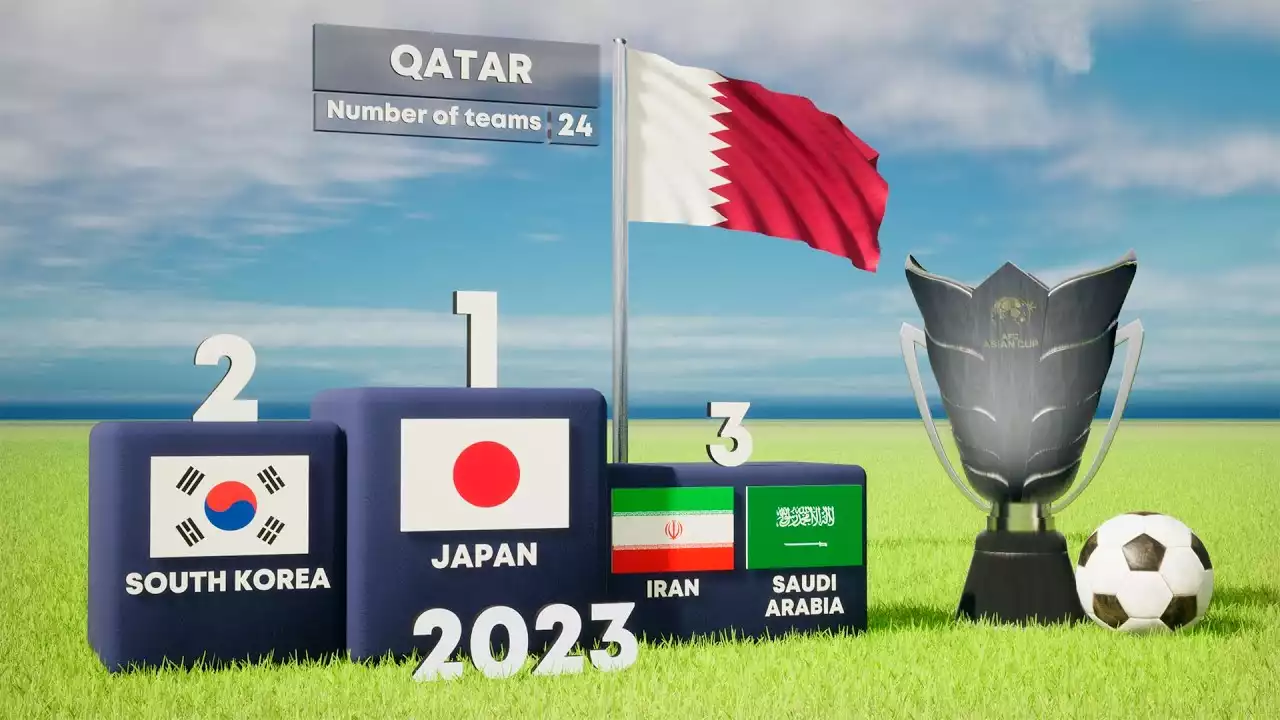History of the AFC Asian Cup
The AFC Asian Cup has a rich history that dates back to its inaugural edition in 1956. The tournament was created to determine the best national team in Asia and provide a platform for teams to compete at the highest level. Initially, the tournament was held every two years, but in 2004, the Asian Football Confederation (AFC) made the decision to switch to a four-year cycle.
The change in frequency was influenced by various factors, including the desire to align with international football norms and the need for more time to organize the tournament. The AFC Asian Cup has since followed the same pattern as other major football tournaments, such as the FIFA World Cup, UEFA European Championship, and Copa America.
Comparison with other football tournaments
The decision to hold the AFC Asian Cup every four years aligns with the scheduling of other regional and international football tournaments. This quadrennial cycle allows for ample time to organize the tournament, conduct qualification matches, and give players and teams enough time for preparation.
The FIFA World Cup, the most prestigious football tournament in the world, has set the tradition of being held every four years. This frequency allows for the global football community to come together and witness the pinnacle of the sport. Similarly, regional tournaments like the UEFA European Championship and the Copa America also occur on a four-year cycle, creating a sense of continuity and excitement for both players and fans.
Reasons for the four-year cycle
There are several reasons why the AFC Asian Cup follows a four-year cycle. Firstly, it provides sufficient time for the AFC to organize the tournament and ensure all logistical and operational aspects are well-planned. From securing venues and accommodations to coordinating broadcast rights and ticketing, a four-year cycle allows for a smoother execution of the tournament.
Secondly, the four-year cycle allows participating teams to evolve and develop new strategies. Football is a dynamic sport, and teams constantly need time to adapt, improve, and build new squads that can compete at the highest level. The longer time between tournaments gives teams the opportunity to analyze their performance, scout new talents, and implement changes that can enhance their chances of success.
FIFA regulations and influence on the AFC Asian Cup
As the governing body of international football, FIFA plays a significant role in shaping the structure and regulations of tournaments around the world. The decision to hold the AFC Asian Cup every four years aligns with FIFA's guidelines for regional and international tournaments.
FIFA's regulations stipulate that continental championships should be held at least once every four years, allowing for a balanced football calendar and giving players and teams enough time to recover and prepare for the next tournament. By following FIFA's guidelines, the AFC ensures that the AFC Asian Cup remains in sync with the global football landscape and maintains its status as a prestigious competition.
Benefits of a four-year cycle
The four-year cycle of the AFC Asian Cup brings several benefits to both the tournament and the teams involved. Firstly, it allows for a higher level of competition. With more time between each edition, teams have the opportunity to improve and raise their standards of play. This leads to a more exciting and competitive tournament, where teams push each other to achieve greatness.
Additionally, the four-year cycle gives host nations ample time to prepare for the tournament. Organizing a major football competition requires significant infrastructure investments and logistical planning. By extending the time between each edition, host nations have more time to build or upgrade stadiums, improve transportation networks, and enhance the overall fan experience.
Challenges and criticisms of the four-year cycle
While the four-year cycle of the AFC Asian Cup has its benefits, it is not without its challenges and criticisms. One of the main criticisms is the long wait between each edition of the tournament. Football fans are passionate about the game and eagerly anticipate major competitions. A four-year gap can sometimes feel too long, leading to a sense of anticipation and longing for the tournament to return.
Another challenge is player availability. Injuries, transfers, and other factors can significantly impact the composition of national teams over a four-year period. Players who were key contributors in the previous edition of the AFC Asian Cup may not be available or may not be in the same form for the next tournament. This dynamic nature of player availability adds an element of uncertainty to the competition.
Impact on player development and national team performance
The four-year cycle of the AFC Asian Cup also has an impact on player development and national team performance. With more time between tournaments, national teams have the opportunity to nurture young talents and groom them for future competitions. This focus on player development helps to ensure a sustainable pipeline of talent and allows teams to build cohesive squads that can compete at the highest level.
Furthermore, the longer interval between tournaments allows teams to learn from their previous performances and adapt their strategies accordingly. Coaches and technical staff have more time to analyze the strengths and weaknesses of their team and make necessary adjustments. This continuous improvement cycle contributes to the overall growth and development of Asian football.
How fans can stay updated with the AFC Asian Cup
As a football fan, staying updated with the AFC Asian Cup is essential to fully enjoy the tournament. Fortunately, there are several ways to stay informed and engaged with the competition. One of the best ways is to follow the official AFC Asian Cup website and social media channels. These platforms provide news, updates, and exclusive content related to the tournament.
Additionally, many sports media outlets and broadcasters cover the AFC Asian Cup extensively. Following their coverage and analysis can provide valuable insights and keep fans up to date with the latest news and developments. Engaging with fellow football fans on social media platforms and forums is another great way to share the excitement and discuss the tournament.
In conclusion, the decision to hold the AFC Asian Cup every four years aligns with international football norms and ensures the tournament maintains its competitive edge and excitement. The four-year cycle allows for ample time to organize the tournament, conduct qualification matches, and give players and teams enough time for preparation. It also allows the tournament to follow FIFA's guidelines for continental championships and provides numerous benefits to both the tournament and the participating teams. So, when the AFC Asian Cup returns, you can be sure that it will be a festival of football excellence, where nations compete for supremacy and fans cheer for their favorite teams, all united in the love for the beautiful game.










